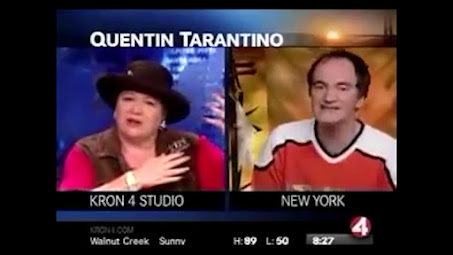An Incestous Marriage: Urban Gothic in the 20th Century
What strange phenomena we find in a great city,
all we need to do is stroll about with our eyes open.
Life swarms with innocent monsters.
--Charles Baudelaire
That noir is an extension of the Gothic tradition ought to be obvious to anyone who has seen the cinematic iterations of either. Darkness--both literal and figurative--pervade, and, in fact, define both traditions. And while it may be cliché to begin by defining terms, it is necessary to do so before going any further. To that end, the Gothic constitutes that body of fiction created to evoke feelings of dread, mystery, and fear, typically--though not always--through the use of supernatural elements.
What, then, is noir? In his introduction to The Best American Noir of the Century collection, James Ellroy--the so-called Demon Dog of Crime Fiction--describes noir as “the long drop of the short pier, and the wrong man and the wrong woman in perfect misalliance. It’s the nightmare of flawed souls with big dreams and the precise how and why of the all-time sure thing that goes bad. Noir is opportunity as fatality, social justice as sanctified shuck, and sexual love as a one way ticket to hell.” (The irony of using a quote from Ellroy--a man who has voiced his disdain for all things vampire and vampire adjacent several times in interviews--to connect these two schools is not lost on me.)
Of course, I am far from the first person to make this connection. Joseph Entin, writing on John Okada’s 1957 novel No-No Boy, describes noir as an update to “the gothic tradition (in the process drawing upon naturalism, modernism, and popular melodrama) for corporate capitalist society; an increasingly urban and bureaucratic world governed by massive, multinational commercial and governmental institutions operating beyond individual control.” Though he does little to develop this assertion beyond a brief aside regarding the implicit racial politics of “The Murders in the Rue Morgue,” Entin’s recontextualization of noir as an outgrowth of the Gothic, rather than hard boiled, school provides an excellent lens through which to examine latter-day Gothic literature, cinema, and the various subcultures each have spawned.
Take, for instance, Alfred Hitchcock’s Psycho, adapted from the Robert Bloch novel of the same name. Though on its face the film appears to be a straightforward noir, the introduction of Norman Bates quickly pushes it into decidedly Gothic territory. Norman’s oedipal relationship with his mother, his strange soliloquies, and homicidal tendencies are all staples of the Gothic, but do not feel at all out of place in an otherwise traditional crime story.
Martin, George Romero’s lesser known 1977 vampire thriller, foregrounds its Gothic elements, making it explicit that the titular character is a vampire from the word go. Norman may have been insane, but at least he was human. Nevertheless, Strip away the snap-on fangs and black eye-liner, and it becomes clear that Martin is really just a noir flick playing dress up.
The late 80s and 90s saw an explosion of media that played in a similar conceptual space; The Silence of the Lambs, Candyman, and Se7en ranking among the most popular. But if any single piece of media truly consummated the incestuous marriage between the Gothic and noir, it was White Wolf’s role playing game Vampire: the Masquerade (V:tM).
V:tM coined the term “Gothic-Punk” to describe the aesthetic of the game; a place where decrepit cathedrals stood side-by-side with glittering skyscrapers. A place where “bloodsucker” was more than just an insult, but an accurate descriptor. A place, in short, where noir was reunited with the Gothic.
White Wolf’s ever expanding catalog of games encouraged the Goth subculture to return to its literary roots by allowing people to engage directly with the storytelling process. This, however, is not to say that Gothic/horror fiction had fallen by the wayside during this period. (On the contrary, the genre was experiencing something akin to the horror paperback renaissance of the 1970s, with Clive Barker, Poppy Z. Brite, and others emerging as compelling new voices in the scene.) Rather, I am claiming that V:tM democratized the Goth mythology, endowing club goers with the ability to directly influence what the subculture meant.


Comments
Post a Comment